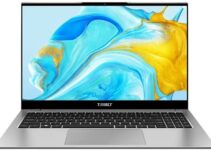The automotive sector is in the midst of a fundamental shift. Spurred by the proliferation of electric vehicles, the entire industry is becoming more tech-forward, with disruptive enterprises across the value chain reinventing the ways in which consumers can purchase and interact with their cars.
Historically, dealerships have been the main point of contact for automotive consumers. However, as vehicles and driver preferences change, retailers are faced with a choice: hold on for dear life to the status quo for as long as possible, or proactively prepare for a radically different future in which only forward-thinking businesses thrive.
Despite an onslaught of digital alternatives, consumers still prefer familiar mediums when shopping for cars. In their recent 2022 Automotive Consumer Survey, Simon-Kucher & Partners explored consumer sentiments surrounding the car buying process — and unearthed some surprising insights, such as 87 percent of American consumers prefer to purchase their cars from dealerships.
Why is that? Specifically, 75 percent of respondents believe that test drives are an essential step of their buying process, and 69 percent of consumers state that they prefer to negotiate on price in order to receive the best deal possible. (Although negotiations remain a polarizing topic, as 30 percent and 27 percent of consumers respectively list the bartering process and time consumption as key pain points).
What does all this tell us? Despite the rise of so-called “hassle-free” options, the traditional dealership experience still provides real value to consumers, providing a pathway for future growth.
This current preference for in-person dealer experiences is unlikely to last unless automotive retailers embrace the technologies that will keep them current or, even better, ahead of the times. Finding a way to bring tech into the process, without losing what is special about traditional dealers, is the key to future growth.
As EV adoption increases, traditional revenue centers like parts and services may begin to decrease, making sales more essential than ever before. Furthermore, the direct-to-consumer models employed by new-age EV manufacturers such as Tesla puts pressure on traditional dealerships to provide a similar level of convenience to the purchasing process.
The confluence of these factors, along with a push from automakers to create more tech-enabled buying experiences, means that future dealership business models will likely need to look a little different than they do today. Retailers will need to determine how to find the balance between physical space, headcount, and technology-driven sales, all while maintaining that “personal touch” that drives customers to their stores. This means focusing on intelligent, forward-thinking investments in order to thrive in a new environment with fewer high-margin revenue streams, and a digital sales funnel as an essential driver of profitability.
The million-dollar question therefore becomes, “Where should dealers invest in the future in order to stay relevant?” The answer is quite simple: Dealers must play to their strengths while embracing technologies that improve their overall customer experience.
Based on our survey results, consumers seem to really care about test drives, but don’t necessarily love the time-consuming nature of a typical dealership experience. Great! Why not find a partner who can offer a tech-enabled test-drive reservation experience that allows users to explore inventory ahead of time and select several vehicles to test drive during a pre-arranged time slot? That way, when the customer arrives, they have their selected vehicles parked out front ready to go, with a salesperson standing by to walk through specific features.
Furthermore, companies such as Carvana and Vroom have made billions in part on the convenience of home delivery of pre-owned inventory. Why not compete with a similar service, but leverage video conferencing to allow consumers nationwide to negotiate price face-to-face with a real salesperson (if desired), ensuring the buyer feels as though they are receiving a great deal?
In addition to adding efficiencies to dealer operations in a manner that customers appreciate, the true beauty of investing in the right innovations lies in the ability to monetize the value that those innovations provide for customers. Said another way, if a certain practice garners rave reviews from users, why not charge them to use it? While this may not work in all cases, any opportunity to creatively yet honestly drive ancillary margin will become even more essential as the automotive environment evolves.
This is an exciting time for automotive retailers. Those that embrace change and invest in tech will be best positioned to thrive as the industry evolves before our eyes. Thankfully, the auto-tech world has an abundance of companies young and old that solely exist to bolster the dealership experience in every way imaginable — and new offerings constantly in development. The possibilities for future dealer success are limited only by the imagination … and by the willingness to invest in the technologies that will help create the journey desired by tomorrow’s consumer.


